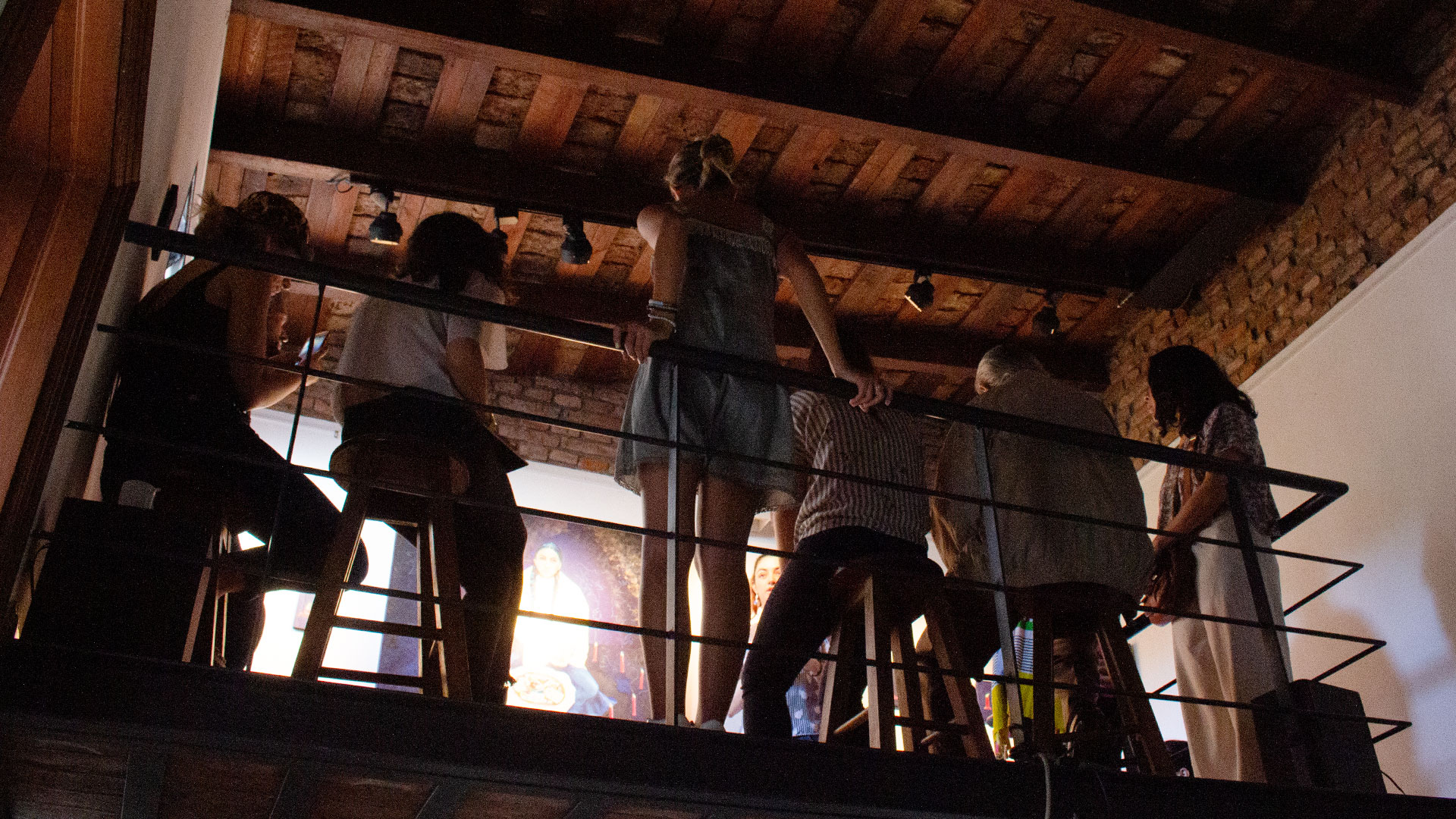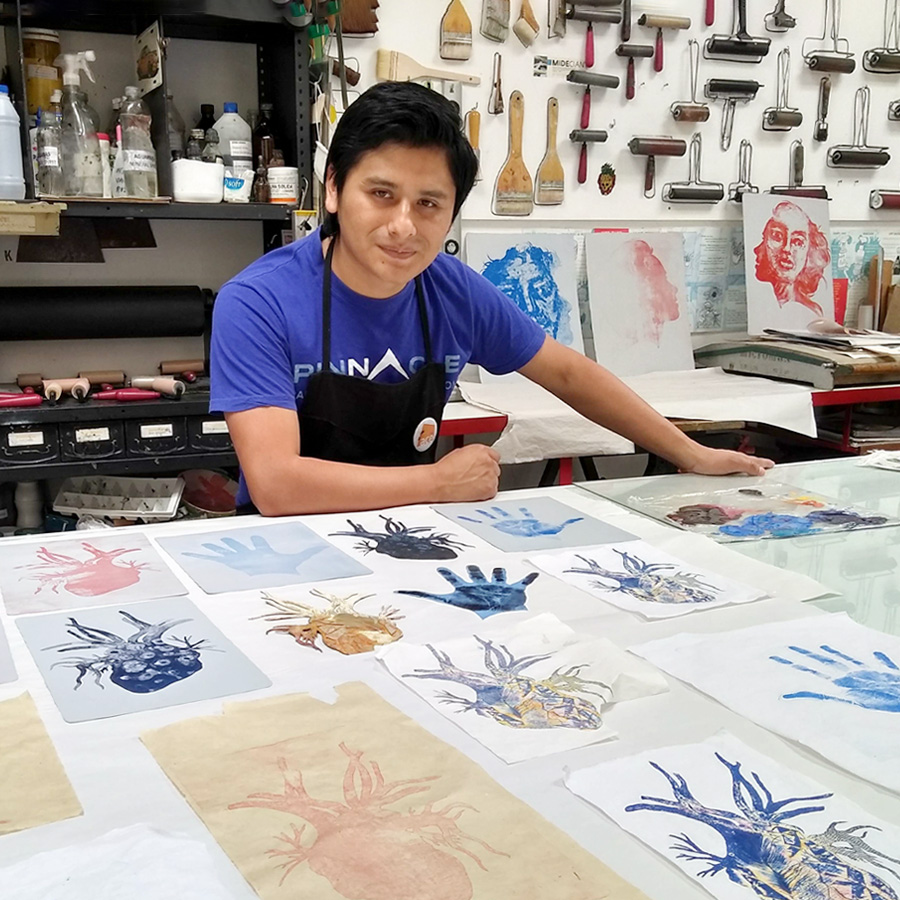Artists
Bolivia
Daniela Elias Guillén
Khurusario Vol. 1
27.01.20 21.02.20
ARTIST STATEMENT
The first artistic residency I did was at Fundación´ace during February-March (4 weeks), immediately after finishing my artistic studies at the National University of the Arts in Buenos Aires, Argentina. During this period, I had the opportunity to share with other artists from different disciplines, with whom I was able to generate very important moments of reflection that informed diverse knowledges that enriched my current proposal.
During this time I started a new body of work and, although it has solid anchorages in previous research that I was carrying out on the fabrics of the ancient culture of Jalq’as in the department of Chuquisaca in Bolivia, this proposal starts from a perspective that has to do with a theoretical and practical production within the framework of contemporary art.
Khurusario Vol. 1 is the name of this research that I am going to carry out in several volumes, and Proyecto´ace was where I started Volume 1, proposing the relationship and parallelism of problems addressed by modern societies, such as stem cells, in vitro reproduction, the freedom in the acceptance of diversity and the entropic with ancestral knowledge reflected in the Jalq’as fabrics, where the women of this culture reveal the same issues to the world through the ritual act of trapping the khurus in their tissues. The khurus (worms), are mythical and mischievous creatures that look like little anthropomorphic and zoomorphic demons, that inhabit the textile from the weightlessness of a world where there is no relative order of things, they can float everywhere and the notion of above and below, it simply does not exist, they do not have a specific genus and reproduce among different species.
This research aims to reveal the parallels between both the modern and the ancestral world in order to be able to draw a virtual fabric between residences where these creatures move freely in order to articulate concepts that adapt to current societies.
The presentation of this first volume was held at the end of the time in residence, with an exhibition open to the public.
BIO
Daniela Elias Gullién
1987 | La Paz, Bolivia.
EDUCATION
2018 | Specialization in Media and Technologies for the Pictorial Application, Universidad Nacional de las Artes. Buenos Aires, Argentina.
2015 | BA, Universidad Mayor de San Andrés. La Paz, Bolivia.
2011 | Graphic Design and Visual Communication, Bolivian Catholic University. La Paz, Bolivia.
EXHIBITIONS
Several of her works are in collections in France, Italy, South Africa, USA, Brazil, Chile, Bolivia and Argentina.



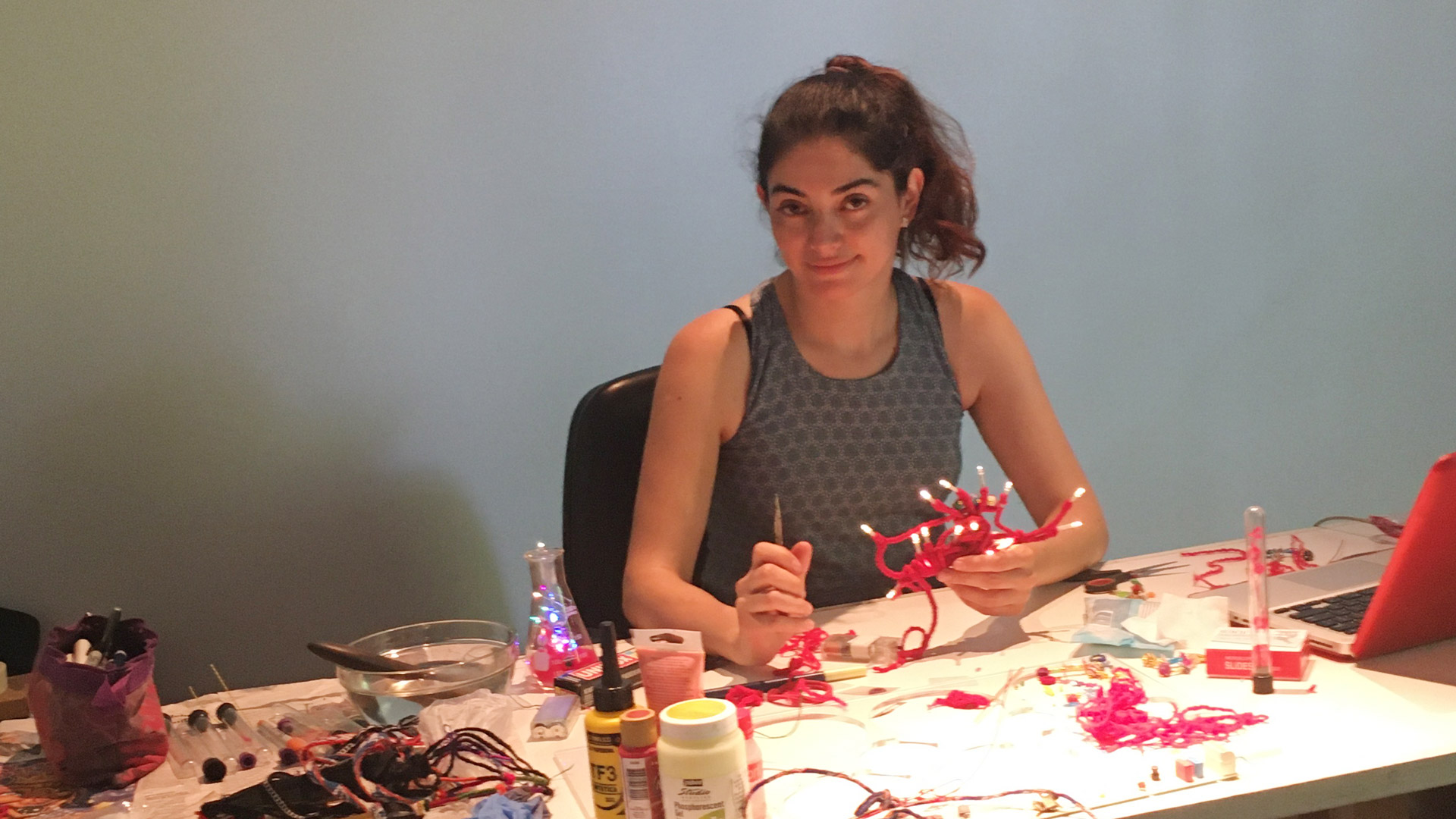



Related Activities
Exhibitions
Khurusarium Vol. 1
Daniela Elias Guillén
19.02.20 06.03.20
Khurusarium, (Volumen 1) –By Alicia Candiani
As of 2009, the Plurinational State of Bolivia recognizes as free, sovereign and independent nations 36 cultures that exist in its territory since before the colony, each with its worldview, hierarchical structures and different socio-economic forms of organization. For four thousand years, weave has been one of the most complex and developed aesthetic expressions of the Andean space, reaching the level of true languages through which the people drew their identities and built their differences. It is then possible to say that Andean textiles can be “read”; as texts that speak of certain thoughts or particular visions of their worlds. Connoisseur of these cultures and their cosmogony, the Bolivian artist Daniela Elias Guillén has worked during her residence in ´ace in a contemporary articulation of the worldview that the Jalq´a culture expresses through her textile art.
The landscape of the Jalq’a weave is that of the Ukhu Pacha (the magical underworld), a sacred space that is described as a world that is not perceived or seen directly and that is not governed by the laws of society, nor even of nature known to man. It is a dark place, it is the world of a deity of the depths and of the separated spaces (the saxra), remote places and of weak light. The Jalq’a have selected the saxra world as a definition of their identity. In it there is no relative order of things, because there is no gravity, but chaos. The designs of these textiles use colors that absorb the light in great magnitude, contributing to the sense of darkness and confusion and forming continuous spaces where the figure and the background merge without a viewing angle or horizon line to fix the eyes. The Ukhu Pacha is a messy and chaotic space (but with an internal order); A world of darkness, death, dreams, fear and multiplication. This entropic space is inhabited by strange figures that are called khurus (worms), mythical and naughty creatures that look like little anthropomorphic and zoomorphic demons. In their weightless world there is no relative order of things, the khurus can float everywhere and the notion of above and below does not exist. The women of the Jalq’a culture reveal the Ukhu Pacha through their textiles. While the khurus can float anywhere, women must catch them in the warp, and in that way ensure that these naughty demons do not distract the people in this world. In some communities, women are only allowed to use red and black wool. Through this economy of elements they plot the warp of a world that is not terrible nor sordid, but rather shows and invites the fruitful freedom of the ungovernable.
Fortunately, the Jalq’a culture was poorly influenced by Weestern concepts. Their textiles transmit, in an encrypted language, a feeling of being in a space and time evoking a mystical freedom. Its integrative, decolonized and flexible ideas, its concept of self-reproduction and reproduction without the need for a division of binary genders, as well as a space where there are no hierarchies of classes or sexes, makes us reflect on the wisdom of this ancestral culture. For the artist, these concepts and the triple belonging of these beings (the underworld, when they are caught in the textile and when they are released) are fascinating elements when it comes to elucidating answers to difficult questions, drawing parallels between contemporary issues that have to do with science and biology, stem cells, in vitro reproduction, freedom in the acceptance of diversity, the entropic and the unpredictable. Concepts sometimes seen as quarrel to Western and Christian thought.
The research to these questions during her residence in ‘ace, opened the doors for an investigation that will take place in several volumes. In Khurusaurio: Volume 1, the artist “unravels / releases / catches” the khurus in the frames to warp, using traditional hand-spun wool and limiting her palette to red and black. In this case, the khurus have not been trapped in the warp but in laboratory elements: test tubes, pipettes, an Elenmeyer flask … Without losing their festive and playful nature, they curl, illuminate and invade the space. By their presence, they succeed in showing us that weightless, free and timeless world where human beings live with their demons who thanks to women, they are able to dominate and hold.
Related artists

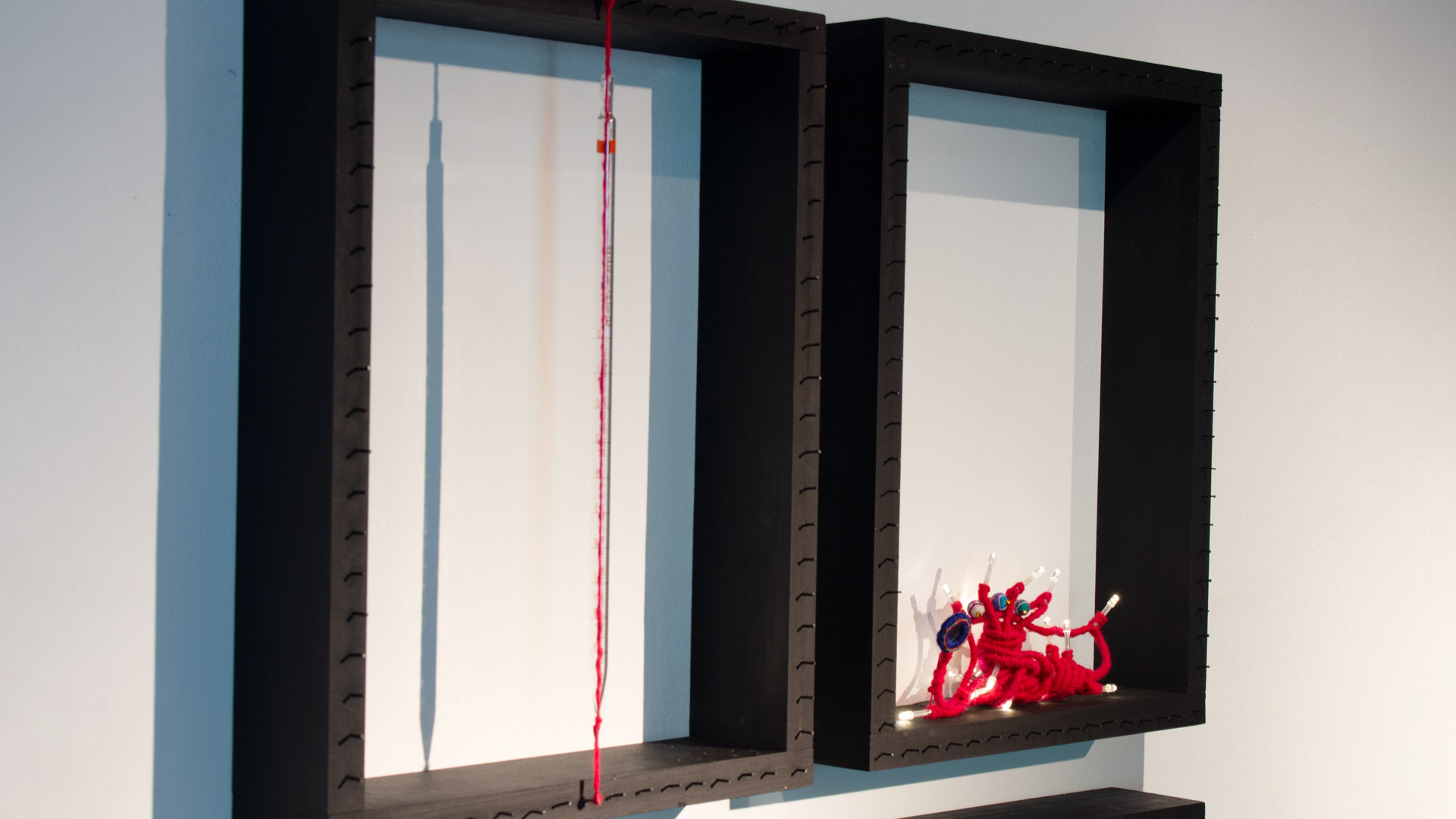




´aceNITE, Exhibitions
Structures
Artists in Dialogue
19.02.20


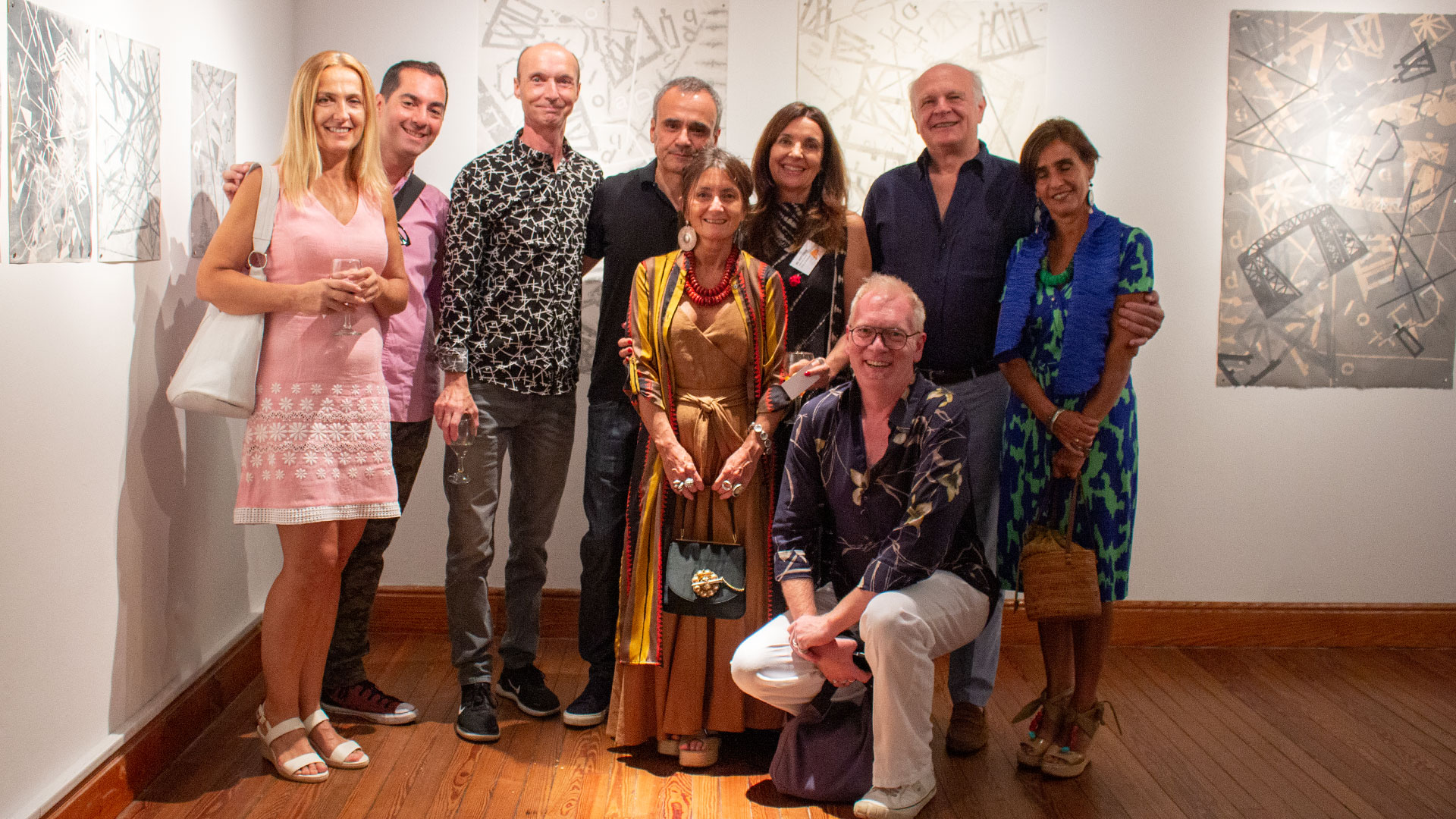
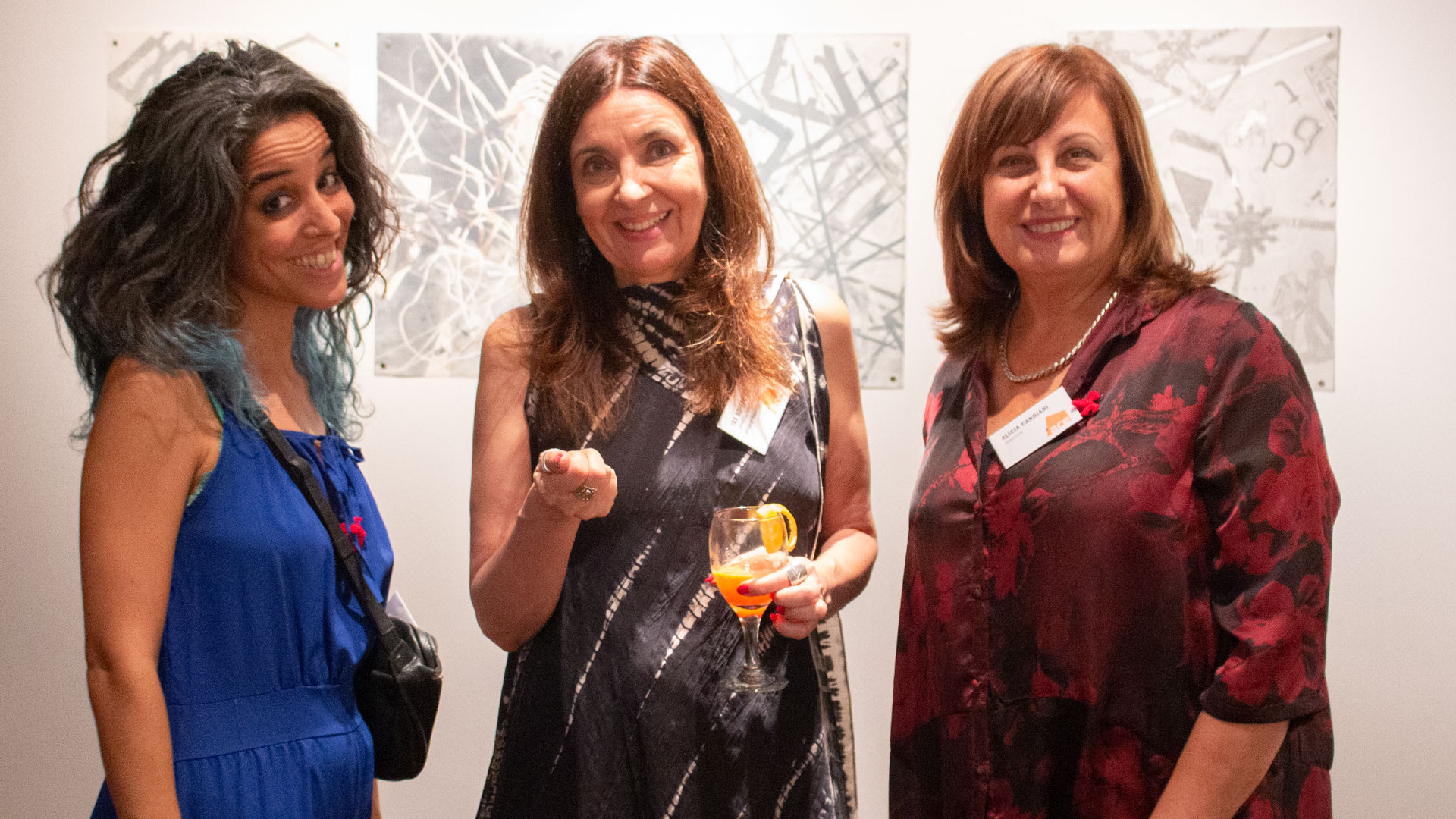

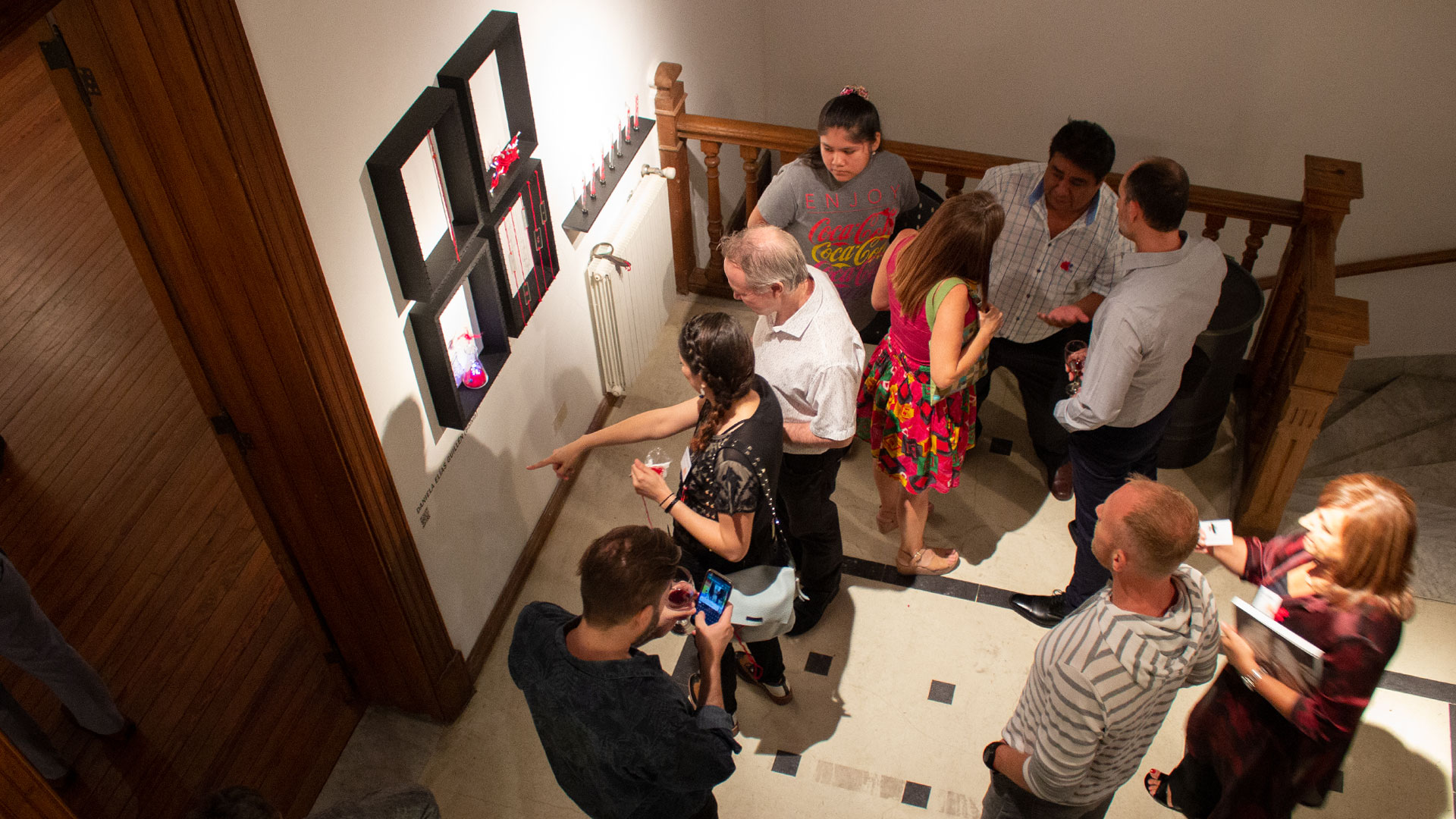




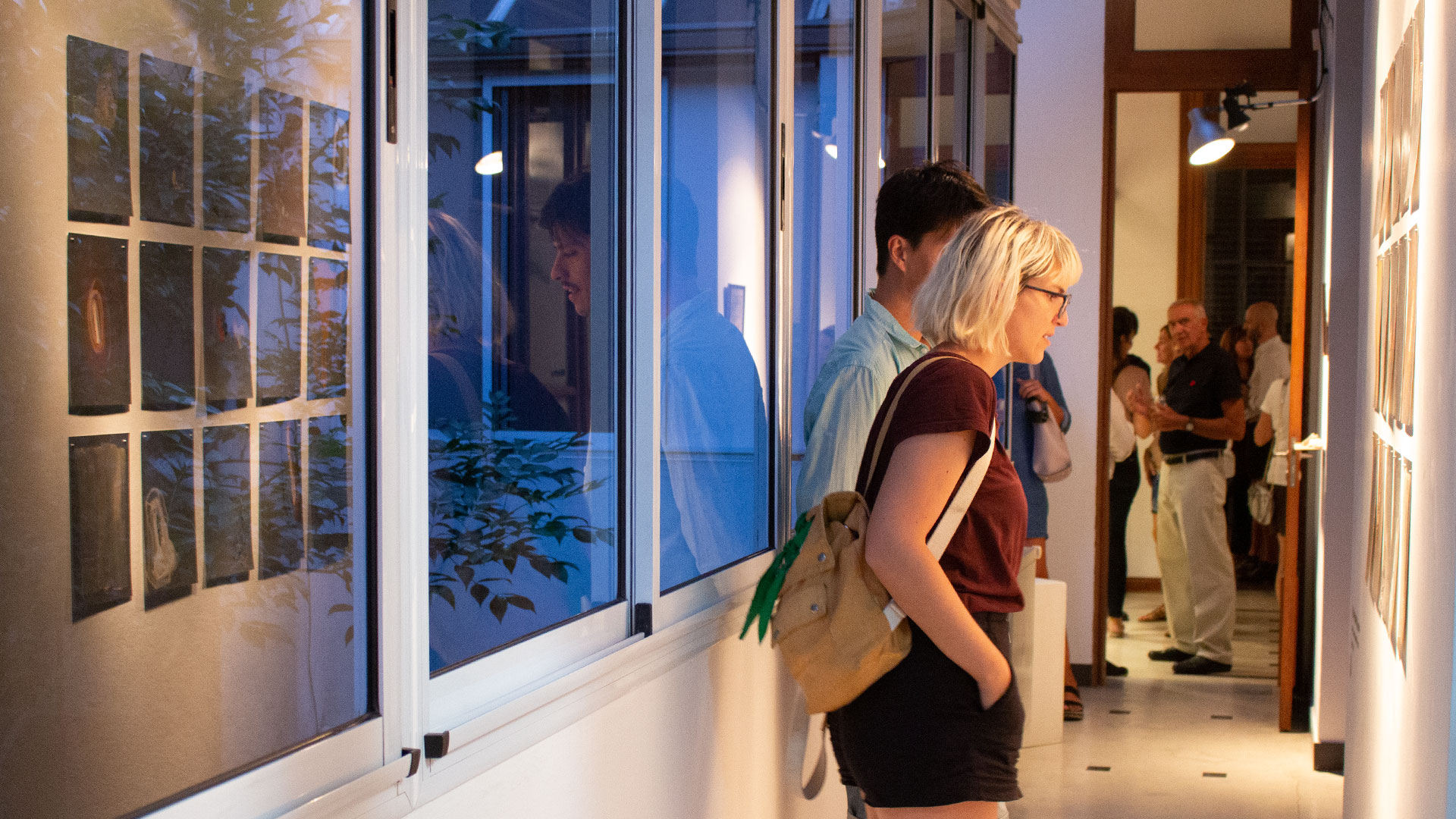





Encounters
Painting of an offering
Daniela Elias Guillén
28.11.19
On November 28th, Daniela Elías Guillén, Bolivian artist living in Argentina since 2016, defended her thesis on Mediums and Technologies for Pictorial Production in our studio. As juries invited by the National University of Arts, the Director Professor of the Postgraduate Domingo Florio, the specialists Laura Ponturo and Jimena Pezzuchi were present, together with Licensed Academic Coordinator Nelda Ramos, tutor of the artist in her process.
Painting of an offering: what envolves—360° sensory experience (Pictorial Installation), is the title of the defended thesis, which investigates the Andean offering as an ancestral ritual. The reflection travels through the different dimensions and slides into the folds of contemporary painting. It also addresses the direct relationship with the other and with other artistic languages, such as photography, performance, installation, sound design and immersive work.
The artist obtained the highest qualification from the jury plus an honorable mention for her work in the academic field, responsibility and outstanding commitment in the field of arts.

